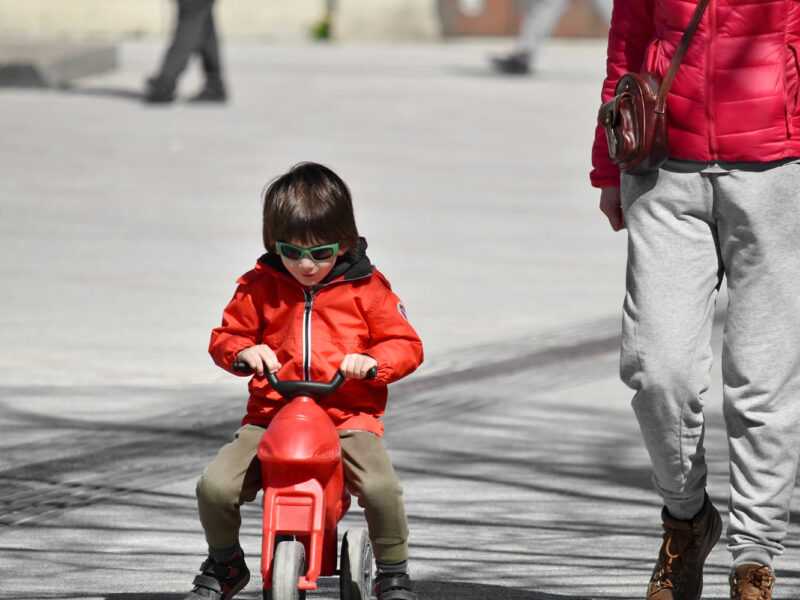Research on cognitive development has uncovered a wealth information about how children learn, grow and thrive over the years. However, it is important to translate these insights into practical applications.
Penn State graduate Brenna Assinger-Das is now assistant professor of psychology at Pace University, NYC. Jennifer Zosh, Penn State Brandywine professor of human developmental studies, examines science-backed core pillars for learning and provides examples of play spaces that include them.
Hassinger-Das stated, “We know kids in Western countries spend only 20% of their time at school, so where are they for the other 80%? They’re at home, or in the grocery store, or the park. How can we transform those everyday spaces to encourage playful learning and promote conversations between caregivers and children? We wanted to maximize these spaces and turn them into places that are fun but also support the kind of learning you do in school.”
The researchers found that six core characteristics, or “pillars,” of learning have been identified in previous studies. These characteristics can be used to maximize any experience a child has. These pillars indicate that experiences should be active rather than passive, engaging, meaningful, socially interactive, iterative rather than repetitive, and joyful.
Zosh stated that they wanted to use research insights to support families, children and communities. “For this specific initiative, we wanted to see how we could take those pillars and apply them to communities in playful ways that support children’s learning.”
This paper was published in the journal trends in Cognitive Sciences. It looked at several spaces that included the pillars of learning in their designs.
Urban Thinkscape is an example of a project that transformed a bus stop into a learning space that encourages play and conversation. Stories was one of the elements that were incorporated. It included several icons on the ground that have different images that could be used to tell stories. Researchers believe that children learn narrative skills as they move from one icon to another and create stories.
Although the paper was focused on public spaces that included these elements, researchers stated that anyone can use the learning pillars for children’s play and experiences.
Pillar One: Active
You can stay “active” while you interact and play with your child by including STEM and literary elements in your speech and interactions.
Zosh suggested that this could be as simple as counting out the apples as you place them in the basket at the grocery shop or asking your child which letter each block begins with when you build a tower. It can also be useful to ask lots of questions, such as “What happens if we mix these blue and yellow paints?” or “What will happen if the yellow triangle blocks are stacked on top of each other?”
Pillar Two: Engaged
Hassinger-Das stated, “Try to limit distractions as much as possible, including background television and your own smartphone use.” These distractions can sometimes be unavoidable but they can also have the potential of reducing quality learning time with your child. You can make the most out of these interactions by staying focused and engaged while playing.
Pillar Three: Meaningful
You can build on the interests of your child during play by focusing on them. You could create a pretend scenario in which you find dinosaur fossils on the playground, if they are interested in dinosaurs. You can also include information about dinosaurs, such as how many bones they have or what they ate.
Zosh stated, “If you are reading a book set in a different state, get out a globe or a map app and explore where the state is and how the weather there is different from where you live. Helping children build connections helps them weave together a rich world of understanding.”
Pillar Four – Socially interactive
Researchers recommended that your child should lead play while you support them to enhance learning. Let your child choose what blocks to use and ask questions such as “What if I put that block in another direction?” “How many blocks would it take to make a tower as tall as you?”
Pillar Five: Iterative
Children are naturally scientific thinkers. They love to experiment and see how it turns out. Researchers suggested that children should be given the opportunity to predict what might happen, perform “experiments”, create new lyrics to their favorite songs, and to make mistakes. Every mistake can lead to learning.
Pillar Six: Joyful
Playtime can also be made joyful by including elements of surprise.
Hassinger-Das stated, “Playing with shadows and asking which one is bigger or how you can make your shadow grow or shrink is one way to foster surprise and joy. Similarly, think about what helps your child connect with whatever brings them joy, from construction with a cardboard box to playing vet with their stuffed animals.”
This work was also done by Andres S. Bustamante, University of California Irvine; Roberta Michnick Golinkoff University of Delaware; as well as Kathy Hirsh–Pasek Temple University.
This research was supported by the National Science Foundation and The William Penn Foundation.

